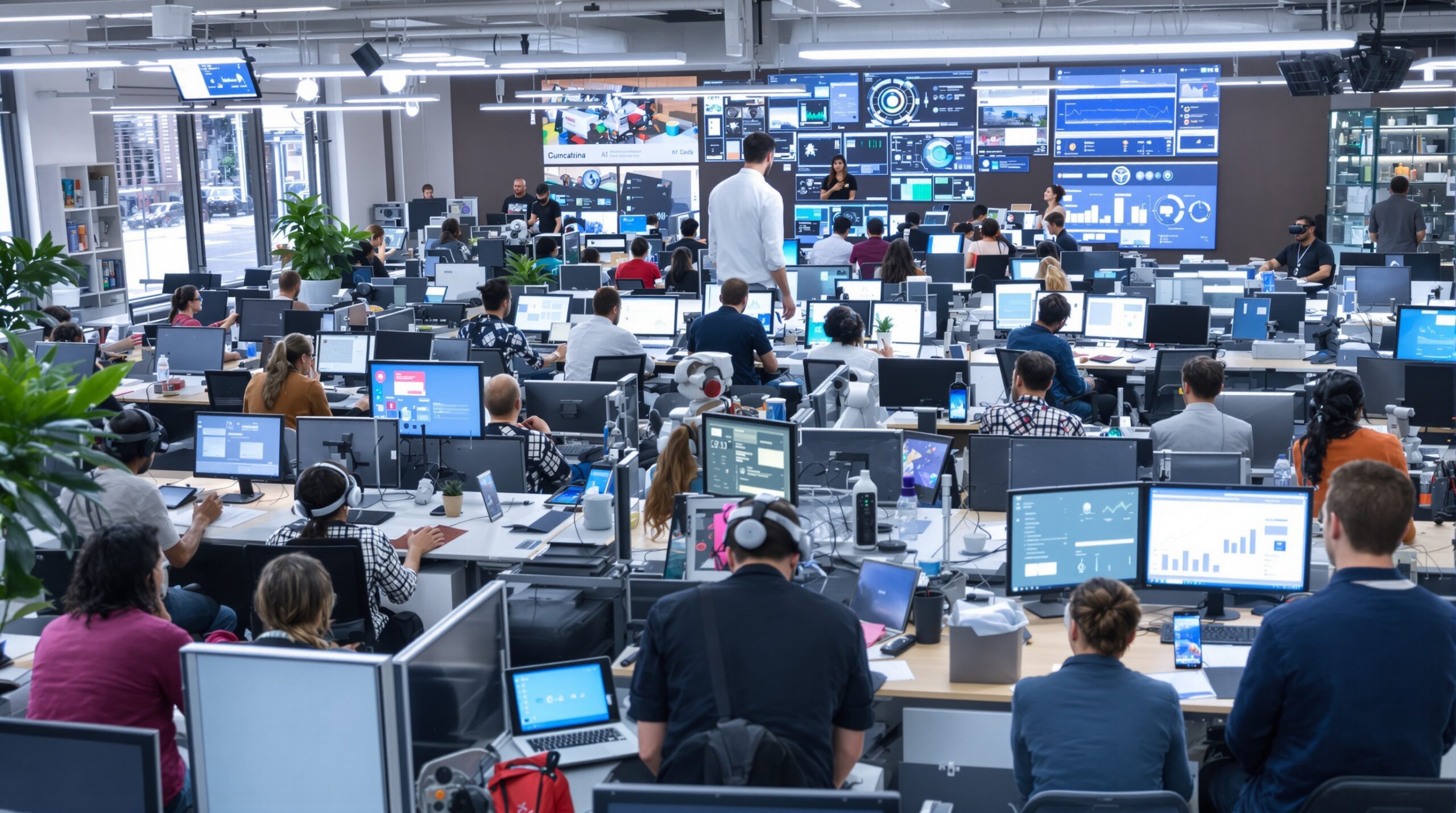Artificial intelligence (AI) is revolutionizing the workplace, changing how people work, and influencing which jobs are in demand. AI-driven technologies, such as machine learning, robotics, and automation systems, are driving significant shifts in labor market dynamics. These innovations have produced both exciting opportunities and notable challenges for workers and employers alike.
Redefining Roles and Job Requirements
Automation and AI-powered solutions streamline repetitive tasks once handled by humans, allowing employees to focus on higher-value activities. Large-scale adoption of machine learning algorithms in sectors like banking, logistics, and healthcare has altered skill requirements across industries. As tasks become automated, the workforce faces rising demand for roles that require analytical, creative, and technical skills.
Software developers, data scientists, and machine learning engineers have seen dramatic growth in job opportunities. Simultaneously, some roles, such as data entry clerks and basic assembly line workers, are at risk of decline. This shift prompts workers to quickly adapt and upskill to remain competitive.
Job Creation Through AI Innovation
AI technologies are not only replacing certain jobs but also creating new professions and entire industries. The widespread deployment of smart systems generates demand for a workforce skilled in AI maintenance, development, and regulation. Emerging job titles include AI trainers, algorithm auditors, and robot integration specialists.
Industries such as automotive, healthcare, and finance have benefited from roles dedicated to designing and managing AI-enabled solutions. For example, the healthcare sector now requires professionals who can leverage AI for diagnostics, patient management, and research. These new opportunities demonstrate AI’s role as a job creator, not only a disruptor.
Shifting Skills and Workforce Adaptation
As AI-driven technologies evolve, employers place greater value on uniquely human skills such as problem-solving, creativity, and emotional intelligence. While algorithms handle complex calculations and data processing, humans excel at relationship-building, ethical decision-making, and strategic planning. Individuals and organizations must prioritize upskilling and lifelong learning to bridge skill gaps caused by automation.
Online education platforms, bootcamps, and corporate training programs now focus on AI literacy and digital proficiency. Transitioning workers need access to affordable, industry-relevant training. Both public policy and private sector initiatives play a key role in reskilling programs, ensuring workforces remain relevant in an AI-driven economy.
The Role of AI in Workplace Productivity
AI-powered tools can significantly boost workplace productivity by automating administrative tasks and delivering data-driven insights. Virtual assistants, smart scheduling platforms, and process automation reduce time spent on routine work. This newfound efficiency allows employees to contribute more strategically to their organizations.
Companies that invest in AI solutions often report improved business outcomes, faster project completion, and enhanced customer satisfaction. By leveraging AI to augment human capabilities, organizations maintain a competitive edge in fast-changing markets. Employees likewise benefit from enhanced job satisfaction and opportunities to focus on creative problem-solving.
Challenges and Concerns: Workforce Displacement
Despite AI’s positive effects, concerns about job displacement and economic inequality persist. Low-skilled roles, particularly those involving repetitive manual or cognitive work, are most vulnerable to automation. Workers in retail, manufacturing, and transportation sectors may face a greater risk of redundancy as AI adoption accelerates.
Addressing workforce displacement requires thoughtful strategies from governments and businesses. Social safety nets, reskilling initiatives, and clear communication about technological change are essential. When transitions are managed well, the workforce can adapt to new opportunities and minimize negative impacts.
AI and Changing Recruitment Practices
Recruitment has transformed due to AI-driven screening tools, automated interview platforms, and predictive analytics in talent acquisition. Employers now use sophisticated algorithms to identify the most qualified candidates from thousands of applications. These systems increase recruitment efficiency and reduce unconscious bias in initial screening.
Job seekers, in turn, must optimize resumes for AI screening and develop digital portfolios that demonstrate technical and soft skills. Human recruiters remain vital for final hiring decisions, especially for roles requiring cultural fit and interpersonal abilities. The integration of AI in recruitment exemplifies how technology can augment, rather than eliminate, human judgment.
Globalization and the Remote Workforce
AI enables advanced collaboration tools, helping companies build distributed teams and access talent from across the globe. Automation platforms and virtual communication tools allow professionals to work remotely or across time zones more efficiently than ever. This development widens the talent pool, improves work-life balance, and reduces geographic barriers to employment.
For employers, the ability to tap into a global workforce leads to access to specialized skills and greater innovation potential. However, employees also face greater competition as remote work opportunities increase. Staying competitive requires constant learning, adaptability, and awareness of evolving industry trends.
Ethical Considerations and Regulation
The integration of AI into the workplace raises important questions about data privacy, algorithmic transparency, and workplace fairness. Governments and industry stakeholders must collaborate to create clear standards for ethical AI use in employment settings. Regulatory frameworks should address bias, safeguard employee data, and promote accountability for automated decisions.
Balancing innovation with ethical responsibility is critical to foster trust and ensure equitable workforce participation. Regular audits and transparent communication help organizations navigate these challenges as AI-powered technologies become increasingly central to business operations.
Preparing for the Future Workforce
As AI-driven technologies continue to reshape the job market, a proactive approach to workforce development is necessary. Employers can invest in upskilling initiatives, mentorship programs, and flexible work arrangements, all of which help employees adapt. Policy makers have a responsibility to support inclusive education and create social frameworks that cushion rapid technological change.
Individuals who embrace continuous learning, digital literacy, and adaptability will thrive as AI redefines careers and workplaces. Collaborative efforts from business, government, and educational institutions will determine the effectiveness of this ongoing transformation.
Conclusion: AI as a Catalyst for Change
AI-driven technologies act as a catalyst for change, transforming job market dynamics and the very nature of work. While challenges such as job displacement and ethical concerns must be addressed, AI also generates new opportunities and raises productivity. Preparing for the future of work requires adaptability, continuous learning, and ethical stewardship from all stakeholders in the global workforce.

